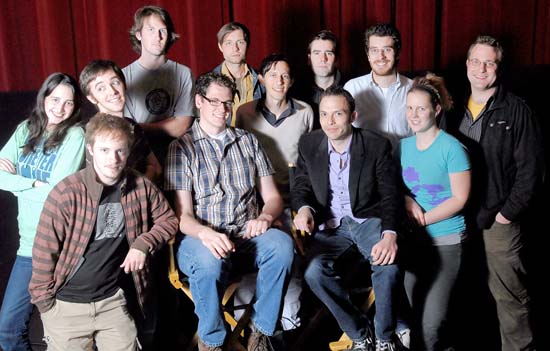Film society to take moviegoers back into the past

The Crank Film Society, a graduate student organization, puts on free screenings of films from the UCLA Film and Television Archive on Thursdays.
By Ross Moody
Jan. 20, 2010 10:33 p.m.

During this winter quarter, UCLA students can take European and American film history courses to bone up on influential films, directors, film movements and filmmaking techniques. However, if you want to get more under-the-radar film history, the series that film graduate organization The Crank puts on each quarter is a crash course.
The series that runs this quarter is formally titled “Tales of the Cities” and spans a four-decade period stretching from the silent period to the 1960s, featuring films that have memorable scenes of or focus on city life.
“We want to show people how the culture, society and local politics of cities were expressed in film format at various points in cinema history,” said Ben Sher, the film society’s president.
The next screening in the series puts a class- and race-busting love triangle on the screen of the James Bridges Theater with the 1961 film adaptation of the English drama “A Taste of Honey,” set in the suburbs of 1950s Manchester.
UCLA owns 250,000 film and TV titles, giving it a collection that is the largest of any university in the world and second only in the world to the Library of Congress, according to Jan-Christopher Horak, the director of the archive.
“(The Crank is) a proving ground,” Horak said, referring to students who are looking to become film archivists and film screening programmers.
The Crank has members who are students in the film and TV department’s Moving Image Archive Studies graduate program, and all members are required to take an archiving tutorial, according to Sher. After going through this, members are then ready to burrow into the Film and take an archiving tutorial, according to Sher. Members are then ready to burrow into the Film and TV Archive and come up with films that they submit to the society to be democratically chosen for and included by Crank members in the society’s film series.
“There are so many films (in the Film and TV Archive) that can’t be seen anywhere else,” Sher said. “With the digital format increasingly being the norm, we want to show people beautiful films as they were meant to be seen.”
The Crank intends for the series to give viewers the only chance to see movies this old on a theater-size screen that will do the films justice, rather than being watched on channels such as AMC or TCM.
In addition to putting old films on a theater screen, the society tries to show films in the formats in which they were created and intended to be shown, by showing films on 35 millimeter celluloid and nitrate prints, for example.
Daniel Steinhart, a cinema and media studies doctoral student, said he sees the showing of films in formats that are now considered technologically obsolete as the chief reason for the beginning and carrying on of the group.
“The name “˜The Crank’ has two origins. One is that all of us who founded the club were film “˜cranks’ or “˜nuts,’ but the other reason is that we wanted to reference old cinema technology. Old projectors had to be cranked to project the film continuously, and a picture of one of these types of projectors is our logo,” said Steinhart, who helped found The Crank as a student in the cinema and media studies graduate program.
Sher said he hopes that after attending screenings put on by The Crank, viewers will also seek out the periodic showings of obscure yet classic films at local independent theaters throughout the Los Angeles area, such as the New Beverly Cinema in West Hollywood and the Nuart Theater in West Los Angeles.
“I was obsessed with the programming at the New Beverly Cinema before I even moved out to L.A.,” Sher said. “In other cities, you will not be able to find theaters that show the sort of old films that are shown at theaters around L.A.”


